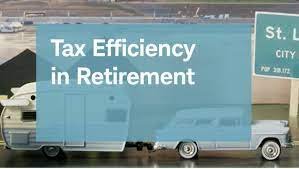How to structure a tax-efficient income when you retire

How to structure a tax-efficient income when you retire – My Money 123 (fpimymoney123.co.za)
When you retire you need an income stream that will give you the best sustainable income for the rest of your life and not waste money in terms of unnecessary costs and taxes.
Now when you retire, you will typically have money in a retirement fund at your company, possibly a preservation fund from when you changed jobs and maybe even a retirement annuity. These are classed as compulsory assets as you have received a tax break when you invested in them. As a result, there will be restrictions on what you can do with them. For example, at least 2/3 of the proceeds must be used to buy an annuity for the rest of your life.
In addition to retirement savings, you may have investments like bank deposits, unit trust investments and shares. As these investments were made with after tax money, they are classed as discretionary investments and you can cash them in at will.
The important consideration here is that when you retire, any income that you draw from your retirement savings, will be taxed at your normal income tax rate. However, any income that you draw from discretionary investments, will be taxed as being capital gains which would be around 40% of your normal tax rate.
Another consideration that you need to bear in mind is that your retirement savings will not attract any estate duty should you die. There is often merit in keeping a large portion of your personal wealth in your retirement fund to take advantage of this benefit.
With a bit of clever financial planning from a certified financial planner can help you find the optimal mix of investments.
Discretionary investments
Look at consolidating your longer-term bank deposits, unit trusts and shares in a single discretionary investment plan. This will make the management of these investments easier and allow you to make regular and sustainable drawdowns from this plan.
The advantages of having a plan like this are.
- the income will be taxed at the capital gains tax rate
- you will be making use of the annual R40 000 a year capital gains exclusion
- you will be able to make capital withdrawals from this investment in order to pay for any emergencies
Compulsory investments
These would be the proceeds of your various pension, provident, preservation and retirement annuity funds.
There are three key decisions that you need to make. These would be:
- What lump sum should I take?
- What life annuity should I take?
- What living annuity should I take?
Lump Sum
You are entitled to take up to 1/3 of your retirement savings as a lump sum. As the lump sum is taxed on a sliding scale, it often does not make financial sense to take the full lump sum.
You should ideally not take a lump sum amount where lump sum tax band is higher than the marginal tax that you would be paying when you retire.
Life annuity
This is like the pension our parents had. You invest a lumpsum to buy a pension for the rest of your life.
The big advantage here is that the income you get here will be significantly higher than that which you can sustainably draw down from a living annuity.
The downside here is that once you buy it, you no longer have access to the capital. There is also nothing of substance for your heirs to inherit besides any residual payments if a guaranteed minimum number of payments was selected.
I like to use this product as the spine for a retired person’s income. It is cheap to run so there is little wastage in terms of costs. If the life annuity rates are good, I like to use it to cover most of the basic fixed costs. I then slot in other products around it.
Living annuity
Here you have a lot of control over where you invest the money – you can choose your portfolios. You can also select what draw down rate you take. This can be anything from 2.5% to 17.5%. The higher your drawdown, the greater the chance that you could run out of money in later years
I like to use several of these living annuities in my planning. My thinking here is that in years to come, if you need a higher income, you can always convert one of these to a life annuity. The life annuity will give you a higher income at a lower risk.
Remember that living annuities do not form part of your estate so it is a clever way to transfer wealth to your heirs.
Kenny Meiring, CFP ® is an independent financial adviser at SFP Wealth.